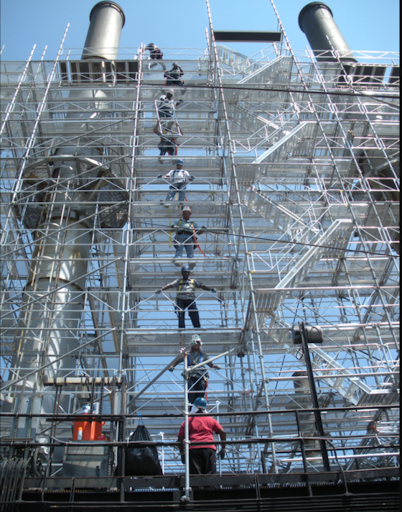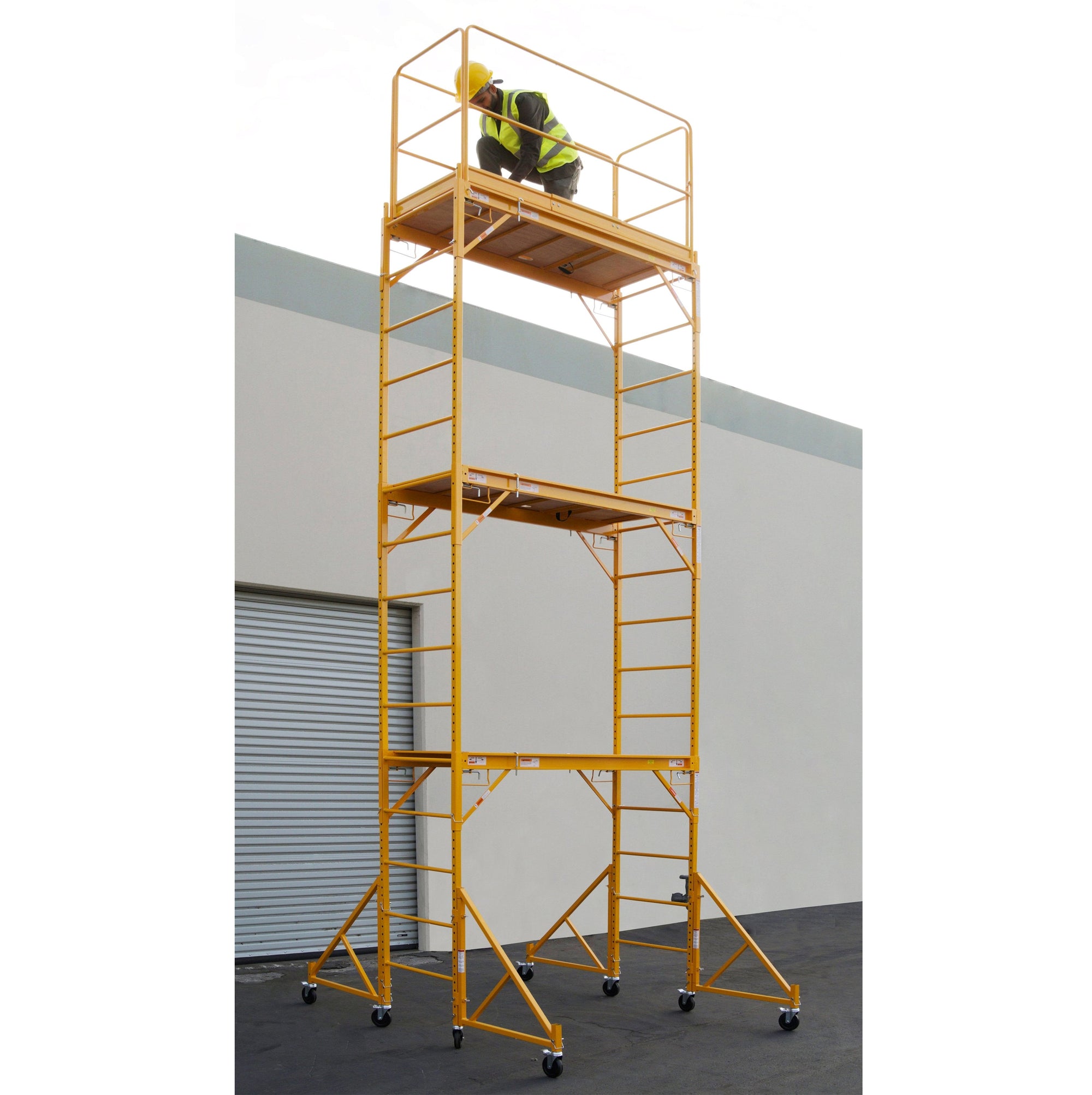Choosing a Local Scaffolding Company for Reliable and Timely Service
Choosing a Local Scaffolding Company for Reliable and Timely Service
Blog Article
Exploring the Different Kinds Of Scaffolding Made Use Of in Building Jobs
The building industry counts heavily on various kinds of scaffolding to satisfy particular project demands, each offering distinct benefits and applications. Conventional frame scaffolding gives a sturdy foundation for general jobs, while put on hold scaffolding is essential for work on skyscraper structures.

Standard Structure Scaffolding
Traditional framework scaffolding is just one of one of the most commonly made use of approaches in the building and construction sector due to its effectiveness and flexibility. This system includes straight and vertical structures that are put together to create a secure system for employees and products. The primary elements include upright messages, straight journals, and diagonal dental braces, which together give a solid framework that can support significant loads.
Among the vital benefits of traditional structure scaffolding is its versatility to various building and construction jobs, ranging from residential structures to huge commercial frameworks. The modular style permits easy assembly and disassembly, making it efficient for both long-term and temporary projects. In addition, the system can be customized in elevation and width, suiting different building designs and website problems.
Safety is extremely important in scaffolding applications, and conventional framework systems are outfitted with guardrails and toe boards to avoid falls and make certain employee security. Moreover, routine examinations and adherence to safety policies are important in preserving the stability of the scaffold. Overall, standard frame scaffolding continues to be an essential selection in the building sector, supplying a reputable platform for labor and improving total task performance

Suspended Scaffolding
Suspended scaffolding offers an unique solution for building and construction tasks that need access to elevated surface areas, specifically in scenarios where traditional frame scaffolding may be not practical. This sort of scaffolding is normally suspended from the roof covering or upper degrees of a structure, utilizing a system of platforms, pulleys, and ropes to create a functioning area that can be adjusted to various elevations.
One of the key advantages of put on hold scaffolding is its flexibility. It can be quickly repositioned or decreased to fit changes in construction demands, making it ideal for jobs such as window installation, façade work, and maintenance on skyscrapers. Additionally, the minimal footprint of put on hold scaffolding permits much better use ground space in city environments, where area is frequently minimal.
Security is a crucial factor to consider in the use of suspended scaffolding. In general, suspended scaffolding gives a efficient and effective option for accessing hard-to-reach locations in various building scenarios, enhancing both performance and security on website.
System Scaffolding
System scaffolding, often related to as a contemporary solution in the scaffolding sector, consists of pre-engineered parts that can be quickly put together and adjusted for different construction projects. Scaffolding. This kind of scaffolding is defined by its modular style, which permits flexibility and efficiency on work websites, fitting different heights and structural requirements
Normally made from high-strength steel or aluminum, system scaffolding offers improved durability and stability. The parts consist of vertical blog posts, straight journals, and diagonal dental braces, which interconnect securely, ensuring a durable framework. The design frequently includes standardized fittings, streamlining assembly and disassembly procedures, consequently minimizing labor time and costs.

Rolling Scaffolding
Rolling scaffolding is a versatile option to conventional set scaffolding, created for flexibility and convenience of usage on construction sites. This kind of scaffolding contains a platform supported by frameworks with wheels, permitting employees to quickly move it as required. check my source The movement attribute significantly enhances productivity, as it reduces downtime related to putting together and taking apart fixed scaffolding.
Normally created from light-weight materials such as aluminum or steel, rolling scaffolding provides a tough yet portable solution for jobs requiring constant repositioning - Scaffolding. It is especially useful in jobs such as paint, drywall setup, and electrical work, where access to numerous heights and places is essential
Security is vital in rolling scaffolding style, with attributes such as locking wheels to stop unexpected movement when in use, and guardrails to shield employees from falls. Additionally, several designs are adjustable in elevation, suiting different project needs.
Cantilever Scaffolding

The layout of cantilever scaffolding generally involves using arms or braces anchored to a building or structure, next allowing the platform to extend outward securely. Safety is extremely important; thus, these scaffolds must be crafted to withstand numerous loads and ecological problems. Normal inspection and upkeep are important to ensure architectural integrity and worker safety.
Cantilever scaffolding is preferred for its flexibility and reliable use area, making it a preferred selection in metropolitan environments where area restraints prevail. Furthermore, it helps with much easier accessibility to high elevations, inevitably adding to the total performance of building projects. Just like all scaffolding kinds, correct training and adherence to safety standards are vital for employees using cantilever scaffolding.
Final Thought
Typical structure scaffolding provides stability, while suspended scaffolding supplies flexibility for raised jobs. System scaffolding assists in quick setting up, and rolling scaffolding boosts flexibility for differing job environments.
Traditional frame scaffolding image source supplies a sturdy foundation for basic jobs, while suspended scaffolding is important for work on high-rise structures.Rolling scaffolding is a flexible option to typical set scaffolding, made for wheelchair and ease of use on building and construction sites. As with all scaffolding types, appropriate training and adherence to security standards are essential for employees making use of cantilever scaffolding.
Conventional framework scaffolding provides stability, while put on hold scaffolding provides versatility for raised tasks. System scaffolding promotes quick setting up, and rolling scaffolding improves mobility for varying work settings.
Report this page